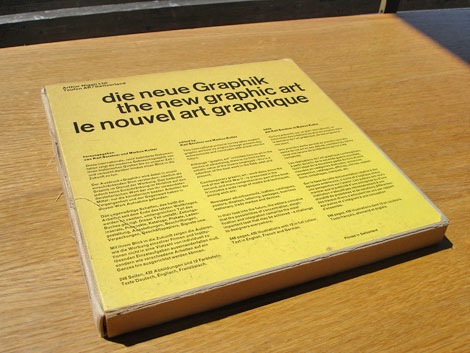Image via The original, 1964 edition appears to have been a collection of four essays. In 1967, Gerstner expanded the second edition out to include quite a few more examples, and this appears to be the first time he included what has become one of my favorite design quotes of all time: “To describe the problem is part of the solution.” The 2007 edition adds a couple more prefaces, a few more examples, and an enjoyable case study on designing a new typeface for IBM (“A new beginning: the IBM original”).
Karl Gerstner: Review of 5x10 Years of Graphic Design, etc. Swiss Design. Swiss International. Although many Swiss designers today resent these labels there is no denying the fact that between the end of the Second World War and the end of the. Four essays collectively entitled Designing Programmes.
In fact this third edition is set entirely in kg privata, an evolution of the whacky little typeface Gerstner designed for IBM in the early 80s. Image via The words contained within the now scarce pages are largely irrelevant without their accompanying imagery, so I still recommend grabbing a copy of the physical book if you can. But there are some true gems of copy-and-pastable wisdom scattered throughout, and I have spent a bit of time collecting them for you here. Personally, I was amazed by how many of his critiques transcend their times and context, for example: calling out the tendency towards grandiosity that must plague designers of all generations.

- Ebook Designing Programmes By Karl Gerstner [PDF] Designing Programmes By Karl Gerstner click here to access This Book: FREE DOWNLOAD Tm research archive designers.
- May 10, 2017. Scanned PDF for #1 Karl Gerstner — Designing Programmes is published by Daniel S.
Karl Gerstner Typography
So without further preface, I give you Designing Programmes, digested: “Dear Reader” (Introduction for third edition) — 2006. “Style is the adaptation of the forms of function and display to the spirit (and hence to the taste) of the times.” p. 33 “Is integral typography a new label? The typographical aspect of a new ism? No, this is just what is not meant. The times of both, pioneers and isms, are over.
After the adventurers of the 1910s and the 20s we are the settlers, the colonizers.” p. 57 “It is precisely in typography that the difficulty of setting theoretical boundaries is plain. For example discussing Max Bill’s functional claim (not quoted here – NF), Jan Tschichold, the editor of ‘Elementary Typography’ said even in 1928: ‘The New Typography is different from the earlier because it is the first to attempt the derivation of the appearance from the function of the text.’ And Moholy Nagy even five years earlier: ‘This first of all: an unambiguous clarity in all typographic works, legibility and communication should never suffer from a previously held aesthetic.’” p. 57 “In the ’20s for instance it was claimed for the first time that the typographer should proceed from the data of his material, from the basic typographic elements; today it is hardly conceivable that he should not proceed from them. 57 “Such ‘either or’ criteria have served their time and purpose. ‘There remain only open doors to be unlocked’, as the German saying has it.
Nobody will relieve us of the task of searching for new criteria.” p. 58 “Typography is not an art in spite of its serving a purpose but for that very reason. The designer’s freedom lies not at the margin of a task but at its very centre. Every solution he finds on this basis will be an integral one, will achieve a unity between language and type, between content and form.” p. 58 “We are not only threatened by the danger of extravagance and superficiality where the individual creation becomes lost, but also by the menace that the knowledge and experience of the pioneers will degenerate into mere formalism, become fashionable.” p. 74 “Here the designer must intervene, he must in a sense aim at a larger whole; he must not continue to carry out the single task so much as create structures from which single solutions can be derived.” p.